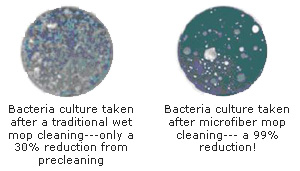El Sarten del Frito
martes, 29 de diciembre de 2009
Influenza AH1N1. . .No se crean todo lo que dicen
lunes, 10 de agosto de 2009
Que valor tiene una mujer para ti?
Que tan valiosas son las mujeres para cada uno de nosotros?
Que piensas de esto?
DEberian seguir usando los médicos las batas blancas de manga larga?
American Medical Association Considers
Banning Doctors’ White Coats
by www.SixWise.com
At the American Medical Association’s annual conference, an unusual policy question was placed on the table: Should doctors abandon their white coats?
The concern comes from studies showing the potential for the long-sleeved garments to harbor dangerous bacteria like MRSA and C. difficile, and transfer it from one patient to the next.
|
The majority of medical personnel at some hospitals say they change their lab coats less than once a week, even if they know it’s contaminated! |
The AMA was considering adopting a “bare below the elbows” dress code to help protect patients from unnecessary infections.
In the end, the AMA decided the matter deserves more study before a ruling can be made, but this is not the case in some other countries. Britain has banned not only long-sleeved white coats but also ties, jewelry and other items from physicians’ wardrobes for two years now. Scotland also banned the white coats and ties and instead created a national uniform of color-coded scrubs for all health care workers.
Even within the United States, some hospitals have taken matters into their own hands. At The Mayo Clinic, for instance, white coats are not allowed and doctors instead wear business attire.
How Clean is Your Doctor’s Coat, Really?
In the United States, there are more than 2 million hospital-acquired infections every year, according to the National Nosocomial Infections Surveillance (NNIS) System of the Centers for Disease Control and Prevention (CDC). This results in an additional 17,500 to 70,000 deaths and an added expenditure of over $4.5 billion.
Although there is no conclusive evidence showing what percentage of these infections were caused by contaminated clothing, research has shown that dangerous and antibiotic-resistant bacteria does, in fact, exist on health care workers’ sleeves and can thrive there for up to 56 days.
And, (cover your eyes here if you don’t want to read something disturbing!) the Wall Street Journal reported that 65 percent of the medical personnel at the University of Maryland said they change their lab coat less than once a week, even though they know it’s contaminated!
Further, 15 percent said they change it less than once a month!
There is also some telling evidence of what’s happened once dirty clothing was nixed from the hospital setting:
-
Infections after cesarean births went down by more than 50 percent after St. Mary's Health Center in St. Louis, Mo. gave medical personnel hospital-laundered scrubs and required them to wear two layers of gloves.
-
A British surgeon reduced postoperative infections by two-thirds by requiring nurses to put on a disposable plastic apron before approaching a patient’s bed.
-
At Monroe Hospital in Bloomington, Ind., where hospital-acquired infections are nearly non-existent, laundered scrubs are provided to all staff and scrubs may not be worn outside the building (health care workers can also carry dangerous germs out into the public by wearing their scrubs or white coats to restaurants, on public transportation, etc.).
It’s not only white coats and long-sleeved scrubs that are the problem. Neckties have also been found to harbor germs.
In one study, researchers analyzed the neckties of 42 doctors, physician's assistants and medical students at a hospital. The ties of 10 hospital security guards were also included in the analysis.
| PerfectClean Cloths:
PerfectClean hand wipes are an essential tool for keeping germs at bay. The cloths are made with a revolutionary ultramicrofiber construction that enables them to reach deep into microscopic crevices (NO other cleaning tool available even comes close!) to actually remove dirt and bacteria, not just push it around like ordinary cleaning rags. Plus, these cloths are small enough to slip into your pocket, purse, or desk drawer, and you can use them without any cleaning products or water. Simply pull out the cloth, wipe off your hands, and enjoy the peace of mind in knowing you’re taking an incredibly effective step to keeping germs away.
|
It was discovered that nearly half -- 47.6 percent -- of the neckties that belong to the doctors contained germs that can cause illnesses such as pneumonia and urinary tract infections. Further, the odds of a doctor wearing a necktie harboring pathogens were eight times greater than that of security personnel.
What’s the Case for Keeping the White Coat?
It may seem a simple decision to ban white coats, long-sleeved scrubs and neckties, and simply offer all staff hospital-laundered scrubs (a practice that existed at most hospitals in the United States up until about two decades ago).
But it’s not so simple. Some people, doctors and patients alike, believe the white coat is necessary to make a doctor stand out from the crowd and bolster their authority. Many medical schools across the United States even host “white coat ceremonies” during which first-year med students are given their first garment.
On the other hand, others believe the doctors’ coats should be banned if there’s even a hint that they could be making people sick (and still others who feel the coats are alienating or anxiety-causing would also love to see them go).
For now, however, it’s likely you’ll continue to see white coats and long-sleeved scrubs at a hospital near you … so what can you do to stay safe?
First and foremost, wash your hands often, especially before eating and after going to a doctor’s office, hospital or really any public place. For times when soap and water is not available, we highly recommend keeping a PerfectClean Hand Wipe in your pocket, and using it frequently to wipe off your hands throughout the day (especially after shaking hands, touching doorknobs or other public areas and before eating).
These commercial-grade cloths have patented built-in antimicrobial protection, and are made of 100% safe ultramicrofibers that are only 3 microns in size, which is even smaller than many bacteria. A quick wipe of your hand will clean it down to a microscopic level!
You can also minimize your risk of hospital-acquired infections by keeping your health in check with a healthy lifestyle, and therefore avoiding the need to see a doctor or go to a hospital as much as possible.
lunes, 3 de agosto de 2009
Old trick, great trick!!!
Claro es David Copperfield
jueves, 30 de julio de 2009
texas Hold'em yeah!
miércoles, 29 de julio de 2009
El Perdon!!!!

EL PERDÓN
El tema del día era el resentimiento y el maestro nos había pedido que lleváramos papas y una bolsa de plástico.
Ya en clase, elegimos una papa por cada persona que guardábamos resentimiento, escribimos su nombre en ella
y la pusimos dentro de la bolsa. Algunas bolsas eran realmente pesadas.
El ejercicio consistía en que durante una semana lleváramos con nosotros a todos lados esa bolsa con papas.
Naturalmente la condición de las papas se iba deteriorando con el tiempo, y el fastidio de acarrear esa bolsa
en todo momento, me mostró claramente el peso espiritual que cargaba a diario y cómo, mientras ponía mi
atención en ella para no olvidarla en ningún lado, desatendía cosas que eran más importantes para mí.
Este ejercicio fue una gran lección sobre el precio que pagaba a diario por mantener el resentimiento por algo
que ya había pasado y no podía cambiarse. Me di cuenta que cuando hacía importantes los temas incompletos
o las promesas no cumplidas me llenaba de resentimiento, aumentaba mi stress, no dormía bien y mi atención se dispersaba.
Perdonar y dejarlas ir me llenó de paz y calma, alimentando mi espíritu. La falta de perdón es como un veneno
que tomamos a diario a gotas pero que finalmente nos termina envenenando. Muchas veces pensamos que
el perdón es un regalo para el otro sin darnos cuenta que los únicos beneficiados somos nosotros mismos.
El perdón es una expresión de amor que nos libera de ataduras que nos amargan el alma y enferman el cuerpo.
El perdón se basa en la aceptación de lo que pasó. No significa que estés de acuerdo con lo que pasó, ni que lo apruebes.
No significa dejar de darle importancia a lo que sucedió, ni darle la razón a alguien que te lastimó. Simplemente significa
dejar de lado aquellos pensamientos negativos que nos causaron dolor o enojo.
Si guardamos odio, rencor, o resentimiento por ofensas que hemos recibido, estamos perpetuando nuestro
malestar y consumiéndonos, dejando de disfrutar el momento. Cada vez que recordamos cualquier episodio
que nos causa dolor, dejamos de vivir el aquí y el ahora. Dejamos de avanzar en nuestro desarrollo personal
y peor aún, nos estancamos en nuestro crecimiento espiritual.
La falta de perdón puede disfrazarse con diferentes máscaras. Las personas a veces dicen con un tono de enojo
que ya han perdonado ofensas pasadas, pero su amargura evidente las delata. La falta de perdón se puede
alojar en tu corazón, y estar allí, escondida. Las siguientes preguntas te ayudarán a examinar tu corazón para
ver si necesitas perdonar a alguien:
¿Esperas secretamente que alguien reciba lo que se merece?
¿Todavía sigues hablando negativamente de esa persona a los demás?
¿Te complaces con fantasías de venganza, incluso leves?
¿Gastas tiempo pensando en lo que alguien te hizo?
¿Cómo te sientes cuando le sucede algo bueno a esa persona?
¿Has dejado de culpar a esa persona por la forma como afectó tu vida?
¿Te resulta difícil ser abierto y confiado con las personas? ¿Te enojas, te deprimes o te vuelves hostil con frecuencia?
¿Encuentras difícil o imposible dar gracias a Dios por quién te ha ofendido?Siendo sinceros de corazón, podemos ejercitarnos en algunos pasos para lograr liberarnos de la carga que
significa el rencor y liberar a la otra persona también.
Considera las circunstancias que pudo haber vivido la persona que te ofendió, para llegar a ser como es,
o qué situación estaría viviendo para haber hecho lo que hizo, aún intencionalmente.
Considera qué parte jugaste, o qué pudiste haber hecho para propiciar el incidente.
Deja atrás el papel de víctima y continua con tu vida.
Recuerda las cosas positivas y buenas que te unieron a esa persona, los ratos buenos y bellos que pasaste con ella, los momentos de amor, apoyo, consejo y comprensión mutuos.
Visualiza a la persona que te lastimó recibiendo bellos regalos, muestras de amor y de perdón,
logrando sus anhelos, y triunfando.
Pide al Señor que bendiga a esa persona, para que ella vea la falta cometida y se arrepienta.
Libera a la persona con tu perdón. Así vas a liberarte a ti mismo por vivir en el presente, en el aquí y el ahora.



